The East Village is one of the favorite areas among residents of New York. Celebrities like Madonna, Lady Gaga, Lou Reed, Iggy Pop consider this part of the city special. The buildings in this area are quite low, you will not find skyscrapers here.
Historical places give a special flavor to the East Village, tourists will be interested. The main part of the East Village is on 3rd Avenue and Bowery leading to the East River, between 14th Street and Houston Street. We’ve put together the top things to see and do in Manhattan’s East Village so that you can have an interesting time here.
The East Village had an amazing number of impressive cinemas, as well as some of the city’s earliest cinemas. None of these former cinemas are now operational, but some buildings remain, while others have been destroyed. Some of the more prominent surviving examples include the Veselka Restaurant and the house in Piazza San Marco that once housed the Negro ensemble company that helped launch Angela Bassett’s career. These amazingly atmospheric places have not functioned for almost 40 years, but now they are home to nightclubs.
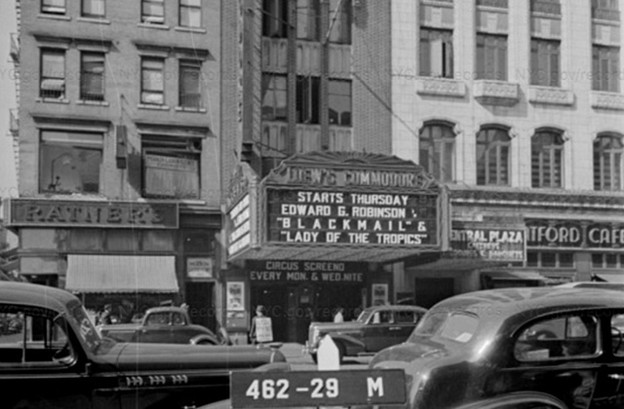
Loew’s Commodore Theater in New York
Several excellent films have been filmed in the East Village, although most of them were filmed as if they were somewhere else. One example is Martin Scorsese’s classic neo-noir Taxi Driver, whose key scenes were filmed in the then hideous East Street apartment building. Another film, The Godfather, was also partially filmed on this street. In addition, the Oscar-winning Ragtime film also owes its atmosphere to the East Village.
This area is closely connected with several musical directions at once. Mostly there are many places for punk and psychedelic rock lovers, but it must also be said that the East Village has a rich history of jazz music. It was here that the legendary bluesman Huddy “Lead Belly” Ledbetter once performed, and ten years later Charlie Parker delighted the audience.
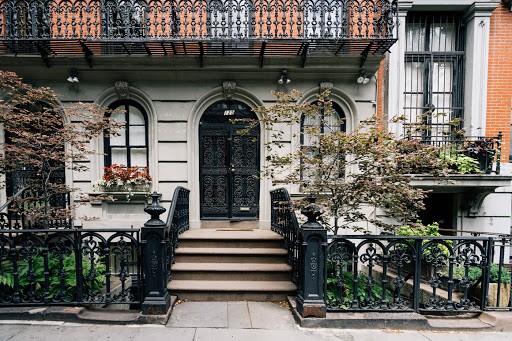
Charlie Parker’s residence
Among the modern jazz cafes and clubs, Slug’s Salon should be noted, where Lee Morgan performed. The history of jazz was created in this institution, so if you love this genre, then by all means visit it. Also nearby was another jazz venue, Stoovesant, but in the middle of the 20th century, it ceased to exist. Now in its place is the Ukrainian National House, which can also be visited as part of an excursion. But Five Spot Café, in which world jazz stars performed, still exists and is open to the public.
The General Slocum disaster was the largest civilian casualty in New York before 9/11 and the second-largest maritime disaster on US waterways. One of two East Village memorials dedicated to the tragedy is located opposite the modern synagogue.
The sinking of the ship, on which there were predominantly German immigrants, significantly influenced the appearance of the area – if earlier the East Village was predominantly German, then after the death of a significant number of residents, the area began to be populated more by Jews who came from Eastern Europe, who built a synagogue in the early 40s.
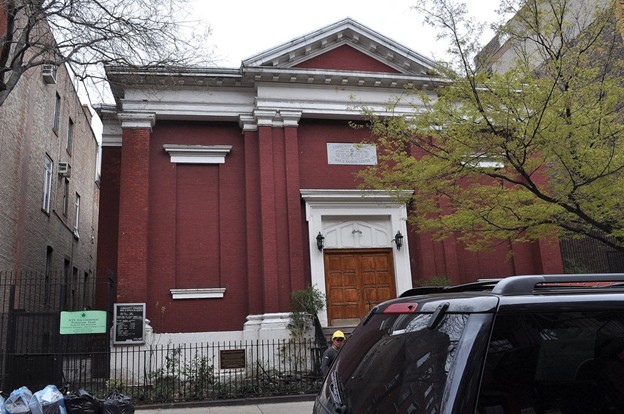
Natural disaster memorial
Various cozy pubs, small bistros, student bars are in great demand here, where you can have a snack and a drink at an excellent price. One of these affordable restaurants, Ten Degrees Bistro, is located at 131 Avenue and serves delicious mussels. This restaurant is very popular despite the recent change of ownership and name (in the past, this place was a market cafe). For a more romantic atmosphere, head to Tree Bistro. A cozy place with affordable prices and a varied menu.
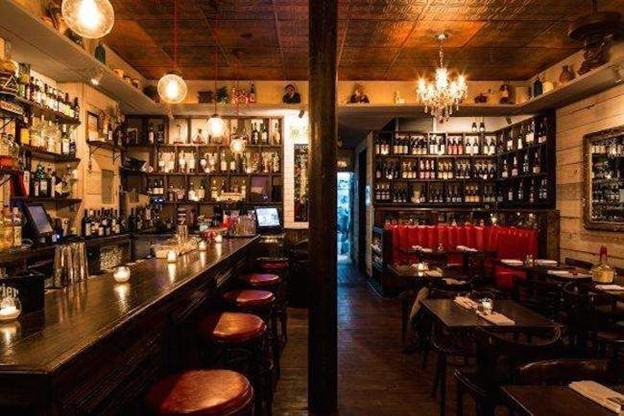
Ten Degrees Bistro
For more information on the culinary side of the East Village, take the East Village Food Tour. During the 2.5-hour tour, you will learn a lot about the history of the quarter, as well as enjoy hot dogs, pizza, ice cream, muffins, and the famous New York egg cream. It is recommended not to have breakfast before the tour.
There are tons of alternative shops and music venues here, giving the area its distinctive character. There are also many shops with rare collections of music recordings at very affordable prices. Also worth mentioning is the lovely Tompkins Square. Order yourself here for a cup of coffee and relax a little. Formerly popular as ‘Little Germany’, Alphabet City may sound familiar to you. As of today, this is only the entire residential area, so don’t plan to spend a lot of time here.
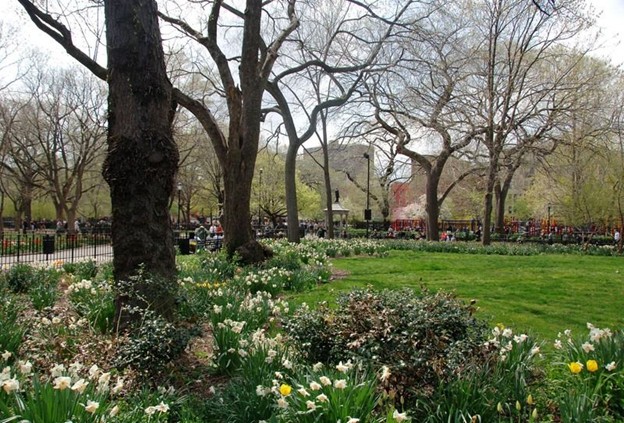
Tompkins Square
Drag has deep roots in New York and around the world and is often a source of entertainment, humor, mysticism, or illusion. Since the late 70s, with the opening of the Pyramid Club, resistance has taken on a new lease of life. It was a mix of punk and performance that took place on a tiny stage in this original East Village location. The club eventually attracted great performers of their time, including Madonna, Nirvana, Red Hot Chili Peppers, and many more.

Pyramid Club
It cannot be said that this place is home to the oldest and most important libraries in the city. The Ottendorfer Branch Library was built as the first public library and was free for everyone. Now everyone can use the services of this library or just look at its architecture from the inside. There is also a small cafeteria with free Wi-Fi.
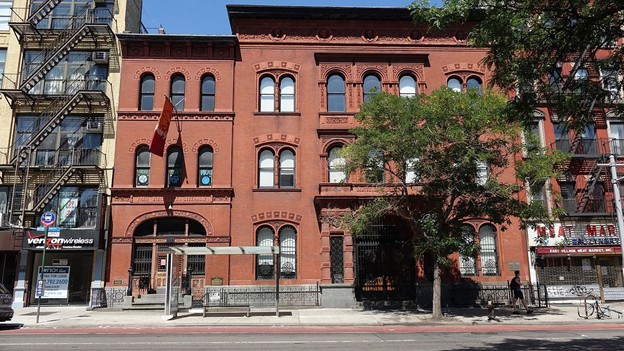
Ottendorfer Branch Library
Few poets or artists are as closely identified with the East Village as Allen Ginsberg, who lived here for most of his adult life. In the early 60s, he lived here with his lover Pyotr Orlovsky and wrote his great work “Kaddish for Naomi Ginsberg”. Incidentally, at the same time, he helped William S. Burroughs write Naked Lunch. Now there is a small house museum where everyone can buy a tour.
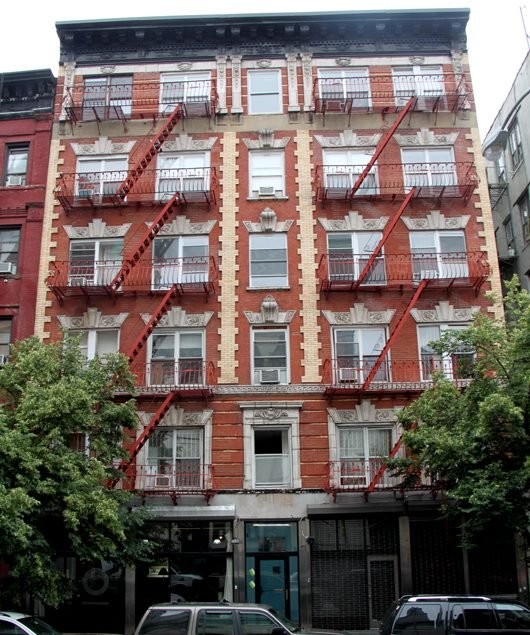
The East Village Temple of Labor is a massive building that was initiated by the Presbyterian Church at the turn of the century. It was a truly innovative project in which church and society had to start interacting in a new way. However, several decades later, the building was recognized as dangerous and for some time it stood idle in an abandoned state.
Years later, the church was still able to find supporters, and the building was rebuilt. In this place, a temple of labor appeared, which houses shops, a gym, classrooms, and corporate offices. Besides, this building has its bell tower and a prayer hall for up to 700 people.
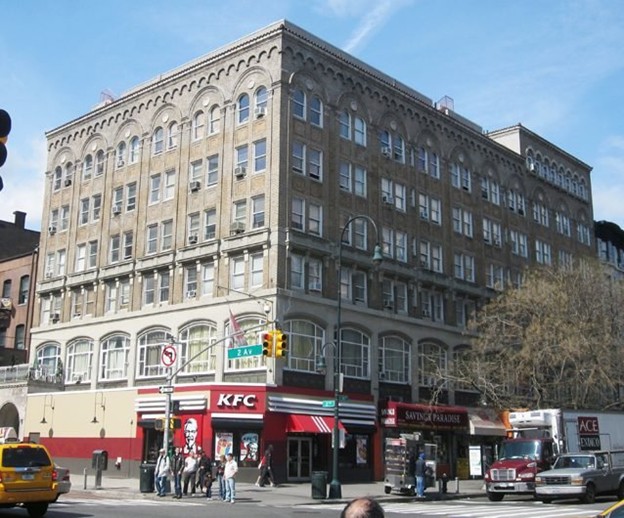
Temple of Labor
The doors of this building are always open to representatives of various trade unions and guilds. People in need could always find support and help in this place, and children can receive spiritual education. Tourists can visit one of the many shops here or dine in the cafeteria. For believers, services are still held open to all comers.
Like many buildings in the eastern quarters of the East Village, the “Umbrella House” was abandoned for a while. But the city artists went there without pleasure – and settled in the house, despite the inconvenience. It was not an easy task – they had to live without utilities and with a leaking roof, but the artists were inventive and, gradually making repairs, used umbrellas to protect themselves from the rain.
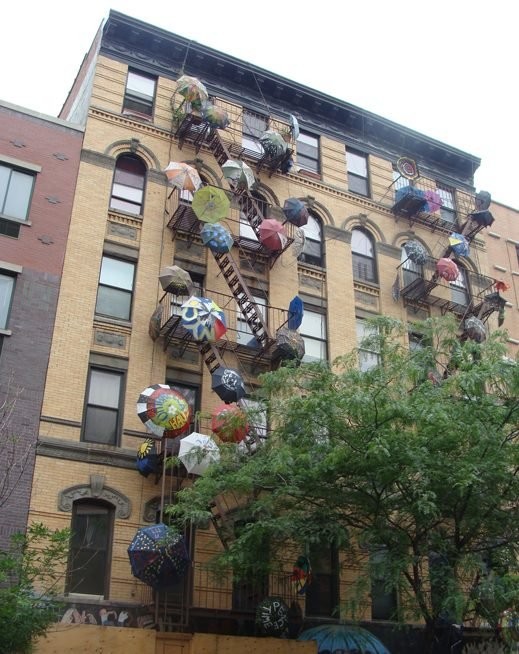
Umbrella house
After living for more than a decade in 1995, the city tried to evict them from the building they had restored. But they went to court and filed a lawsuit to officially take possession of the building – they managed to win the court, and the building remains a cooperative to this day.
The building now has heat, water, and electricity, but in memory of the early days of the building, resident artists for a time installed colorful, patterned umbrellas on the façade, which gave the house its name “The Umbrella House.”
Like us on Facebook for more stories like this: